The most popular stars
Dwarf stars come in many colors, and aren't so small after all
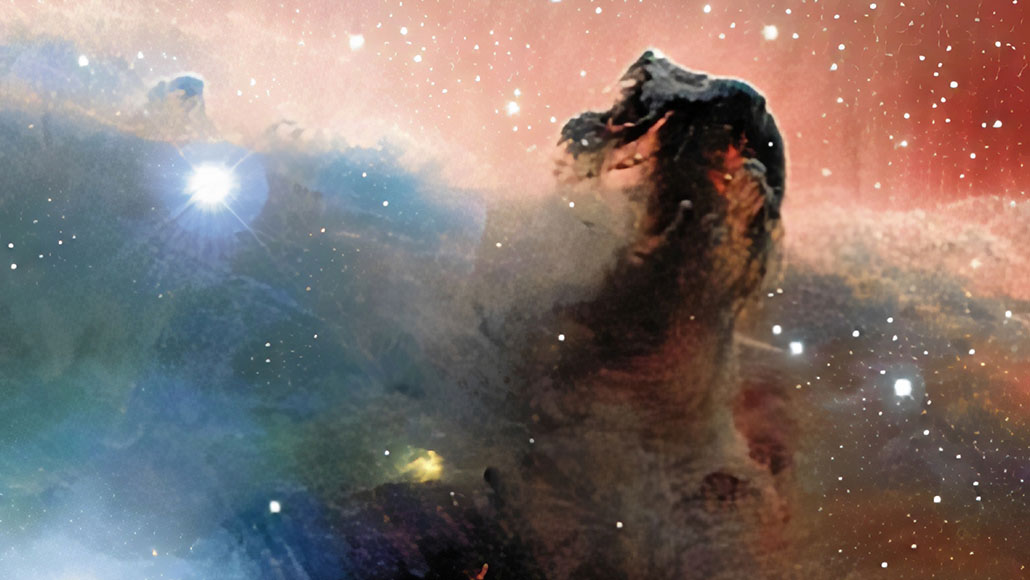
A star begins its life in a dense molecular cloud called a nebula. Shown here is the Horsehead Nebula.
Pablo Carlos Budassi/Wikimedia Commons (CC BY-SA 4.0)
As long as people have been living on Earth, we’ve been looking up at bright stars in the night sky, trying to understand the universe and our place in it. Astronomers have long known that not all stars are alike. Some are almost as old as the universe itself, others are just now being born. They come in different colors: blue, white, yellow and red. Some shine brightly in the sky, and others are visible only with special telescopes. Some stars race through space in pairs or groups; others move alone. Some, like our own 4.8-billion year-old sun, are surrounded by planets.
One of the most important ways that scientists group stars is by size. In the early 20th century, just before World War I, astronomers began to put stars into two main size groups: dwarfs and giants.
“Once they discovered that there was a class of stars really big, called giants, they carved the universe up into dwarfs and giants,” says Jim Holberg, a scientist who studies dwarf stars at the University of Arizona in Tucson. “The giants are enormous stars, and dwarfs are stars like the sun.”
Despite their name, most dwarf stars are not unusually small. Or unusual at all: Most stars, in fact, are dwarfs of one kind or another. But within the large category of dwarf stars are other groups of stars. Keeping track of the different kinds of dwarfs can be difficult, but that’s all in a day’s work for astronomers.
A brown dwarf mystery: planets, stars or neither?
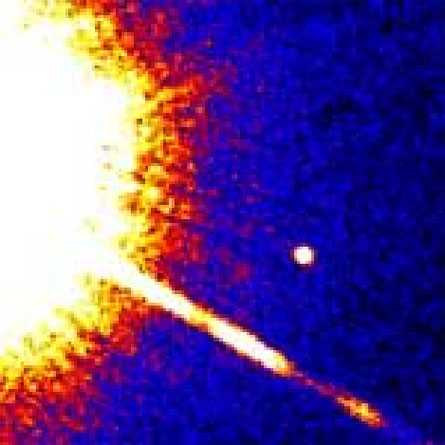
Some objects are so strange that even astronomers aren’t sure what to call them. One of these kinds of objects behaves like a star, but it’s not very hot — and it’s too small. Plus, through a telescope, it resembles a planet — but it’s too big to be called one. What would you call it? A star-net? A planet-ar?
An American astronomer named Shiv Kumar first predicted these strange objects might exist in 1963, and he called them black dwarfs. That name didn’t stick, and ten years later another astronomer suggested the name brown dwarfs. That name stuck.
But there was another problem: Even though astronomers like Kumar could use information to imagine how brown dwarfs should behave, no one had ever seen one. It wasn’t until 1995 — just 14 years ago — that astronomers first saw one of these brown dwarfs. Since that first discovery, astronomers have found hundreds more brown dwarfs.
Thanks to more scientists looking for these stars, and better telescopes to see them with, astronomers now know more about brown dwarfs. As it turns out, they aren’t even brown. They are almost totally dark in the sky, producing no visible light. Instead, they emit infrared light, which is so faint it can only be detected by sophisticated telescopes.
Also, brown dwarfs aren’t even stars. Some astronomers even call brown dwarfs “failed stars.”
When you see a star in the sky, it looks like a calm, twinkling light. Your eyes deceive you, however. A star is anything but calm: What you are really looking at it is a giant, fiery ball of burning gas. For most stars, that gas is hydrogen, the lightest element in the universe. Hydrogen is the fuel for stars, just as gasoline is the fuel for most modern cars.
Stars are powered by a process called fusion, where hydrogen atoms join together to form helium — and give off a lot of energy. Like stars, brown dwarfs have a lot of hydrogen. But unlike other stars, brown dwarfs don’t have enough mass to start the fusion process. So instead of burning bright and hot their whole lives, brown dwarfs smolder slowly and don’t technically qualify as stars.
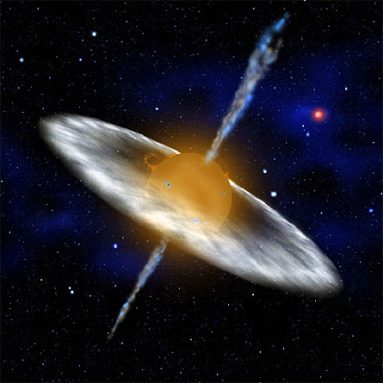 |
|
This illustration of a brown dwarf studied by Phan Bao Ngoc and other scientists shows jets of gas shooting out. These jets tell astronomers that the brown dwarf formed more like a star than a planet.
|
| David A. Aguilar (Harvard Smithsonian Center for Astrophysics) |
In December 2008, astronomer Phan Bao Ngoc, who studies brown dwarfs at the Academia Sinica Institute of Astronomy and Astrophysics in Taiwan, and a team of scientists solved one mystery about brown dwarfs. They showed that brown dwarfs shoot out a stream of gas into space — like stars. Thus, the strange objects seem to form more like stars than like planets. But, Ngoc cautions, that doesn’t make them stars. “It is still too early to say this settles all debate. We need to observe more young brown dwarfs,” he says. “This opens a new window and provides an important clue for the brown dwarf formation theory.”
Red dwarf stars: the most popular stars you’ll never see
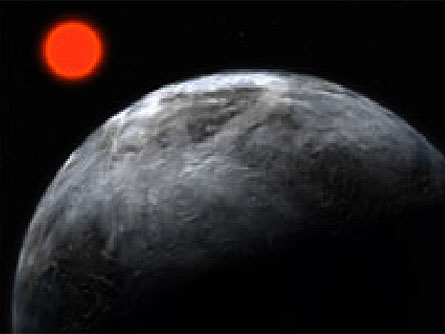 |
|
In April 2007, astronomers introduced a planet circling a red dwarf called Gliese 581 c, illustrated here. The planet is only a little larger than Earth, and though it probably could not sustain life, the discovery gives hope to scientists who are looking for extraterrestrial life.
|
| ESO |
Objects in space that have just a little more mass than brown dwarfs are called red dwarf stars. Red dwarfs may not be much larger than brown dwarfs, but that small increase in size makes a big difference. Red dwarf stars are massive enough to support hydrogen fusion, like the sun. And they’re also technically stars.
But unlike the sun, red dwarfs don’t shine in the sky. “They’re less massive, and they don’t produce as much energy,” says Holberg. “They don’t have a strong energy source, so they’re burning at a low rate.” Most of the energy red dwarfs produce is invisible to the naked eye but visible to high-powered telescopes.
Despite the difficulty in finding these stars, astronomers believe that most of the stars in our galaxy are red dwarfs. The sun’s nearest neighbor, Proxima Centauri, is a red dwarf more than 20 trillion miles away. Most of our nearest star neighbors are red dwarfs.
Astronomers who are looking for life on distant planets are particularly interested in red dwarfs. Some of the planets that have been found outside our solar system are in orbit around red dwarfs. If the planets are enough like Earth, then they may support life. In April 2007, a planet in orbit around a red dwarf was discovered to be only slightly bigger than Earth, but astronomers later determined that life could probably not exist there.
White dwarf stars: the end of the line
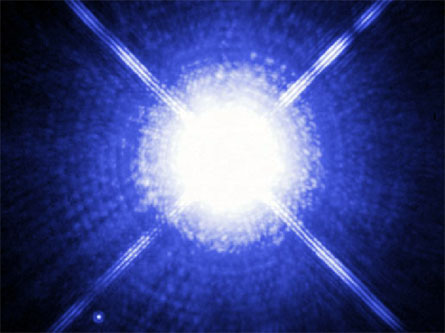 |
|
The white dwarf in this picture is not the giant star in the center — it’s the tiny dot in the lower left-hand corner. Called Sirius B, it is the closest white dwarf to Earth. The star in the center is Sirius, the brightest star in the night sky as viewed from Earth.
|
| NASA, ESA, H. Bond (STScI) and M. Barstow (University of Leicester) |
After a long life of burning hydrogen, a star eventually runs out of fuel. At this point, the star grows and grows and grows into something called a red giant. These giant stars can be hundreds of times as large as the sun, and when theyburn up, all that’s left is the hot core of the star. This hot core is yet another kind of dwarf star.
“The star shrinks to something the size of the planet Earth,” says Holberg. There is no more fuel to burn, but the star is so hot that it blazes as it cools down. Over billions of years, he says, the heat leaks out. “Because the star is so small, it’s like pushing all the water at a dam through a small hole.”
Holberg says that nearly all the stars in our galaxy — about 97 percent — are destined to become white dwarfs. Even among dwarfs, white dwarfs go against expectations. Oddly, the smallest white dwarfs actually have the most mass, and the largest white dwarfs have the least. So the more mass, the smaller the dwarf. For comparison, imagine that you had a magic balloon that deflatedas you blew into it. When a white dwarf cools down, it becomes a black dwarf, a dense, cold object in the sky that astronomers have never seen.
Mukremin Kilic, who started studying astronomy after watching a solar eclipse, says that white dwarfs can help scientists determine the age of one part of the galaxy. But there’s an even more exciting reason to study these stars, says Kilic, at the Harvard-Smithsonian Center for Astrophysics in Cambridge, Mass. He is most interested in studying the planets that orbit white dwarfs because, he says, these planets might help scientists figure out how Earth will end.
At the end of its life, the sun will become a white dwarf. But before this happens, the sun will expand, like a balloon of fire, into its red giant phase. “The sun will become a giant one day and swallow planets,” he says. “What’s going to survive?”
As a giant, the sun will absorb and disintegrate the closest planet, Mercury. Then, as the sun gets bigger, it will absorb our nearest neighbor, the planet Venus. Bye-bye, Venus. But astronomers aren’t sure what happens then — will the sun finally destroy Earth before becoming a small white dwarf?
Don’t worry, says Holberg, we’ve got plenty of time to figure that out: “The sun won’t go through this phase for another 5 billion years or so.”







